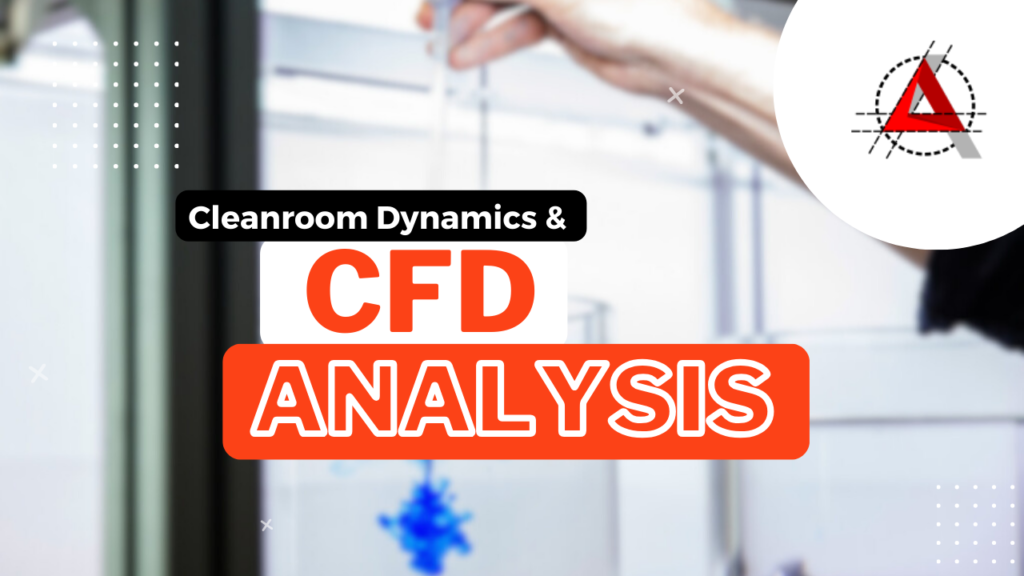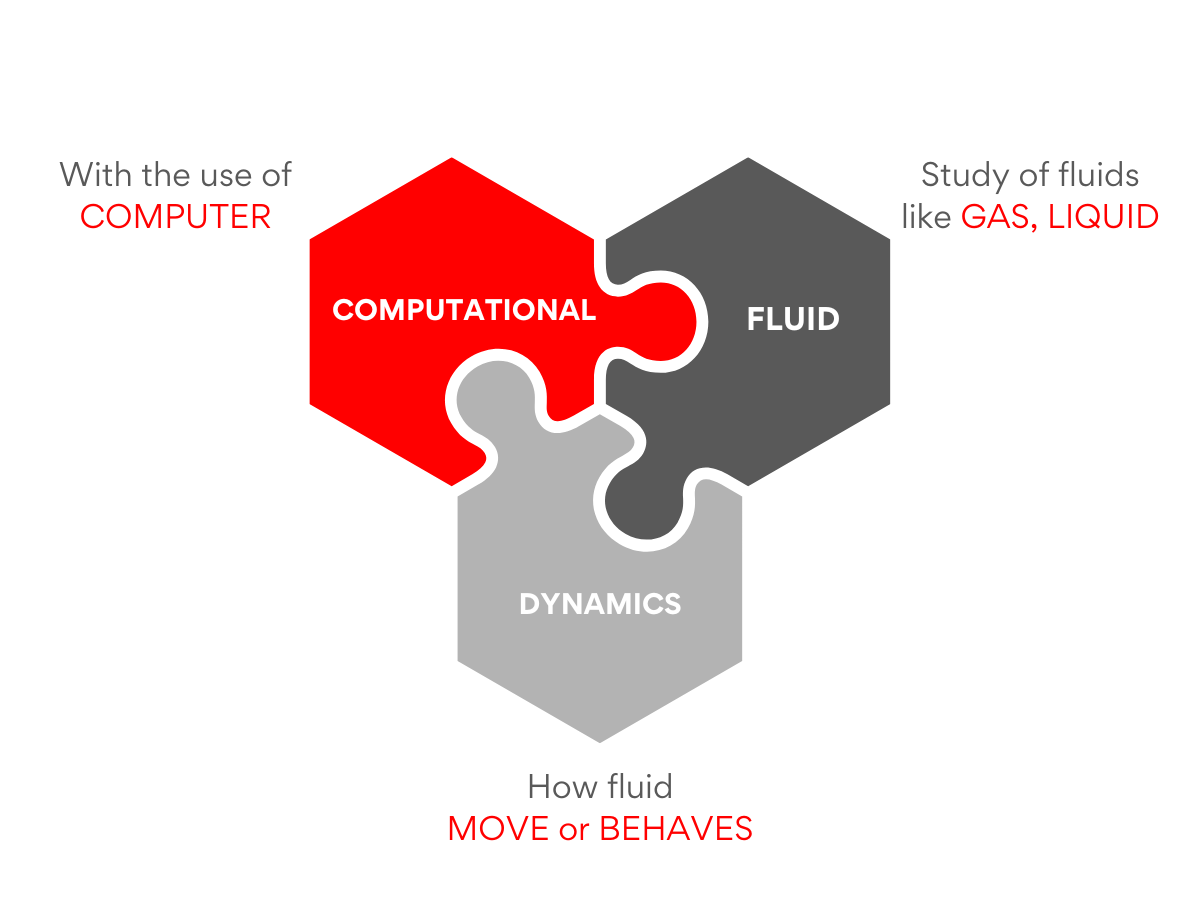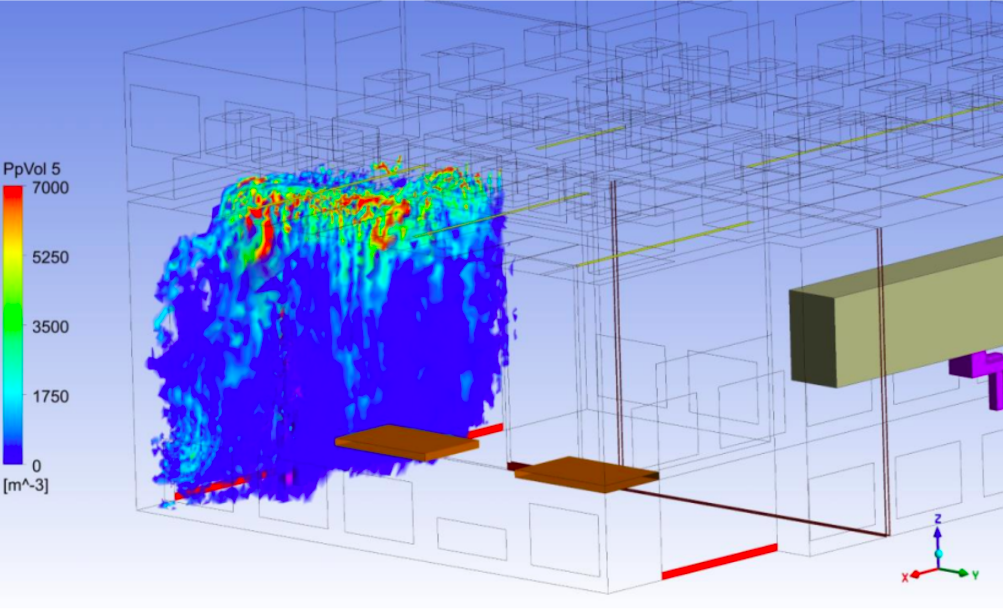Cleanroom Dynamics & CFD Analysis

Have you ever wondered how engineers forecast fluid or air movement? Imagine being in a medical operating room, a computer chip manufacturing lab, or a pharmaceutical production area—any place where the air must be as pure as possible. We correspond to this as a cleanroom. It is essential to keep the air in these areas free of dirt, microbes, and other impurities. This is where analysis using Computational Fluid Dynamics (CFD) is insightful. Let’s see how CFD analysis aids in the creation of a cleanroom that complies with rigorous standards.
What is CFD Analysis?
The acronym for Computational Fluid Dynamics is CFD. In this area of fluid mechanics, the behavior of fluids (such as water and air) is studied and analyzed by computer simulations. Engineers make use of powerful computers to simulate fluid flow rather than creating actual models and conducting experiments. In addition to saving money and time, this enables more thorough investigation.

Why is CFD Analysis Important for Cleanrooms?
Cleanroom contamination can originate from a number of sources, such as external elements like air filtering systems or particles released by personnel or equipment. The quality of products made in cleanrooms can be greatly impacted by even the smallest particle.
- Ensuring Compliance with Standards: To ensure the quality and safety of their products, cleanrooms are required to abide by stringent regulations. These regulations frequently outline the upper bounds on airborne particle concentrations, airflow speeds, and pressure differentials. By offering thorough simulations that show whether the cleanroom design satisfies these strict criteria, CFD analysis aids in ensuring compliance. It saves time and money by enabling alterations prior to actual construction or revisions.
- Optimizing Airflow Patterns: In order to keep a cleanroom under control and prevent the formation of contaminants, proper ventilation is essential. The cleanroom’s airflow may be seen through CFD analysis, which also highlights any locations that might have turbulent or inadequate airflow. Engineers can guarantee that clean air continuously reaches every area of the room, preserving the required degree of cleanliness and avoiding contamination, by optimizing these airflow patterns.
- Enhancing Energy Efficiency: Energy use is high during cleanroom maintenance, especially for the HVAC (heating, ventilation, and air conditioning) system. CFD study, which simulates different scenarios and setups, can aid in optimizing these systems’ efficiency. This not only guarantees a clean environment but also lowers energy usage, which over time results in significant cost savings.
- Identifying and Mitigating Risks: Possible risks like dead zones—regions with little air movement where pollutants could build up—can be found via CFD analysis. Engineers can reduce these risks by redesigning the airflow system or by adding more filter by identifying these zones. By taking a proactive approach, problems are avoided before they start, keeping the cleanroom operational and compliant.
- Supporting Continuous Improvement: Cleanroom designs have modified along with standards and technology. Continuous testing of innovative ideas and advancements is made possible by the versatile and adaptive tool that CFD analysis offers. CFD analysis makes sure your designs stay at the forefront of efficiency and cleanliness whether you’re creating new cleanrooms or updating old ones.

How Does CFD Work?
- Creating a Model: To begin, engineers create a digital representation of the thing, such as a cleanroom’s 3D model. This model has all detail needed for the analysis, including furnishings, equipment, and occupants.
- Defining Air Properties: It details every aspect of the air, including temperature, humidity, and velocity.
- Dividing the Space: A grid or mesh is formed by the division of the surrounding area into millions of little cells. Consider it as a 3D a piece of puzzle, in which every piece is a tiny space volume. The simulation will be more accurate the more cells there are.
- Simulating Fluid Flow: The computer determines how air moves through each cell by using intricate mathematical formulas. These formulas account for variables such as temperature, velocity, and pressure. Taking into account inlets, outlets, and obstructions, the computer runs millions of simulations to forecast how the air will flow through the cleanroom.
- Analyzing Results: When the simulation is finished, engineers can use animated graphs and color-coded charts to see the results. This aids in their comprehension of the behavior of the air and lets them spot any areas in need of improvement.

A cleanroom’s design, construction, or maintenance team can greatly benefit from the use of CFD analysis. It is essential due to its capacity to predict and improve airflow patterns, guarantee adherence to strict regulations, improve energy efficiency, and detect possible threats. CFD analysis can help you gain more control over your environment and ensure the effectiveness, quality, and safety of your operations by being incorporated into your cleanroom strategy. We ensure excellent quality and efficiency in your cleanroom with our dedication to accuracy, customized solutions, and regulatory compliance.
Ascertain that your cleanroom is an elite standard. Reach out to us today to discover more about how our team of experts can assist you in achieving the highest standards of compliance and air quality.
GET IN TOUCH
Complete the form below to get in touch with our team.
